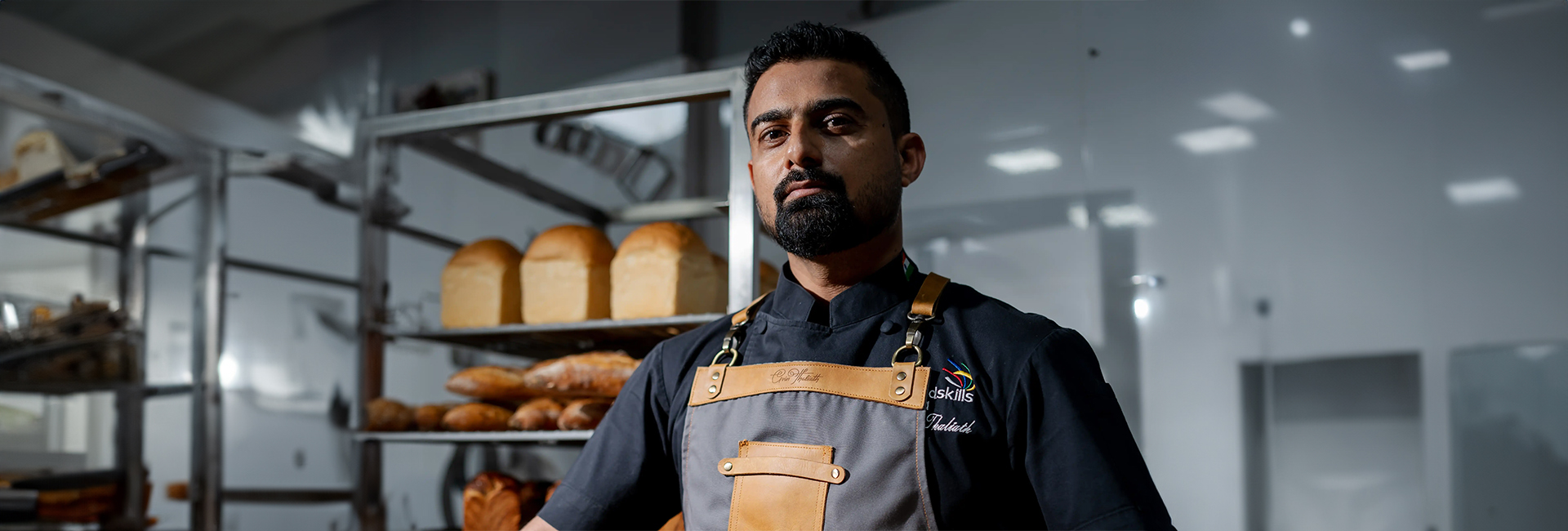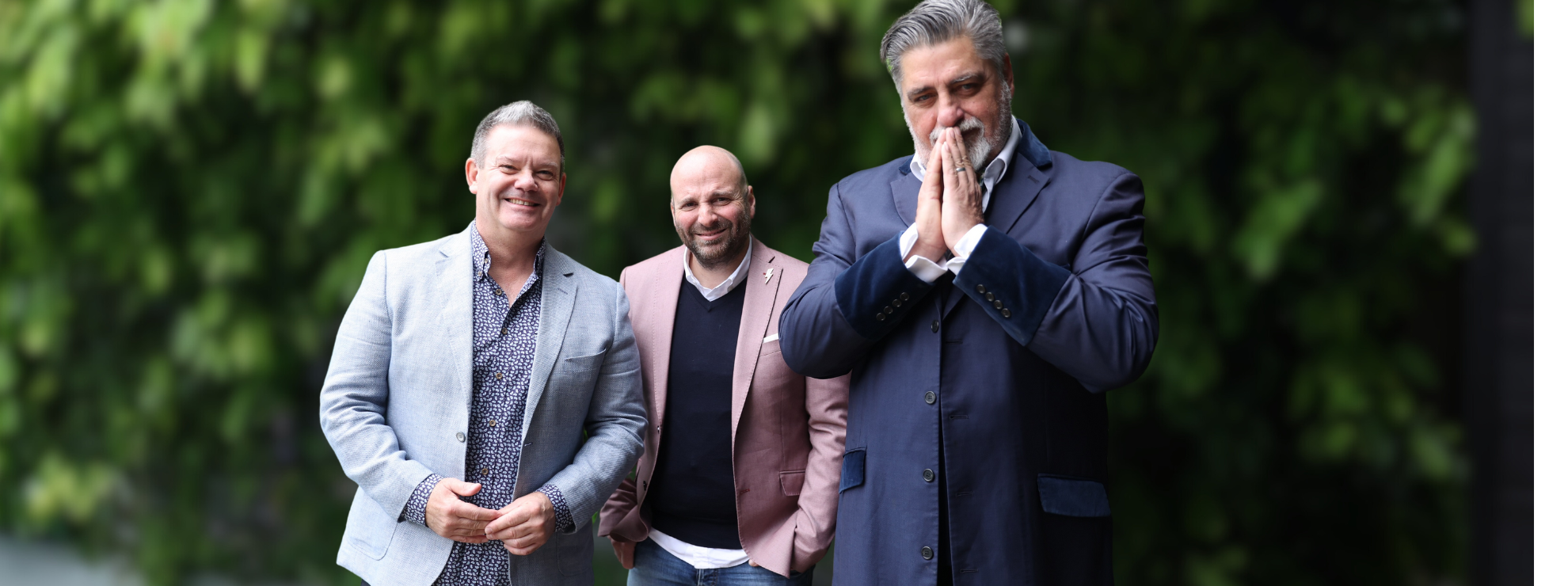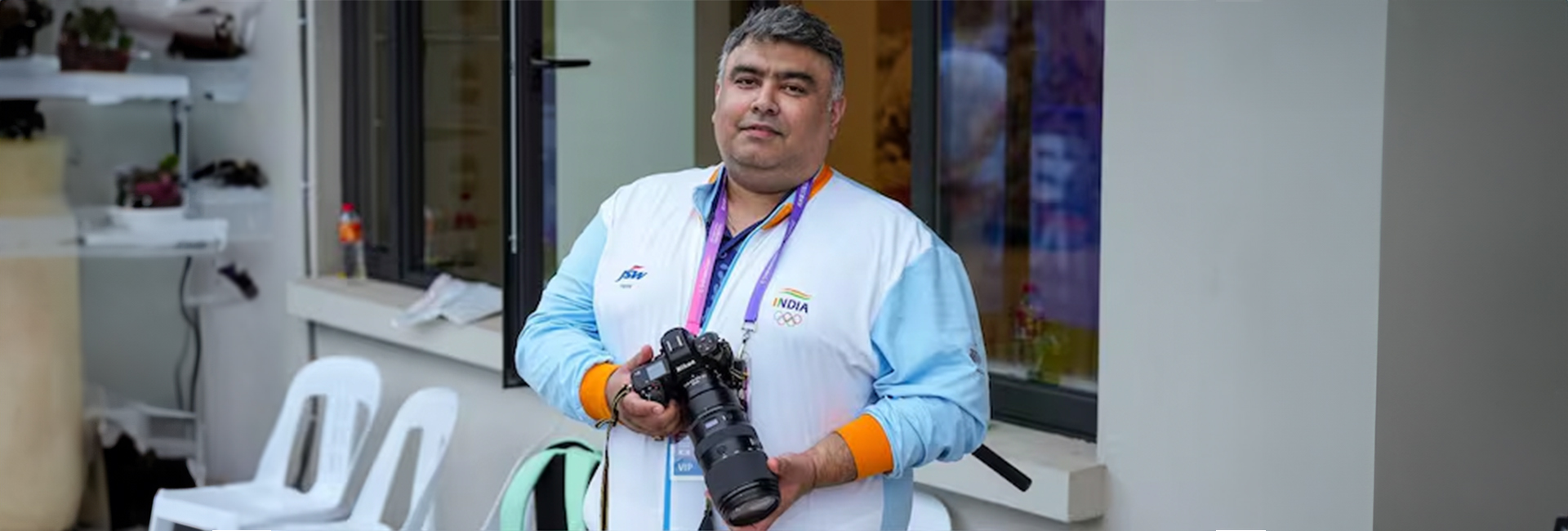(November 17, 2024) Dr. Avin Thaliath is redefining India’s baking landscape with a blend of science, culture, and artistry, transforming baking from a foreign concept to an accessible art. His journey began in the aromatic kitchens of Kochi, but it was his studies in pastry-making in France that became a turning point. Trained in traditional French techniques, Avin returned to India with a bold vision: to bring world-class pastry education and innovation to the country. Co-founding the Lavonne Academy of Baking Science and Pastry Arts in Bengaluru, he set out to blend European precision with Indian flavours and conditions, inspiring a new generation of bakers.
At Lavonne, Avin combines hands-on practice with deep culinary science, introducing students to techniques like autolyse and sourdough fermentation, and teaching them not just how to bake, but why each technique works. His dedication to creating an inclusive baking community and educating future chefs is paving the way for a uniquely Indian take on the art of pastry-making.

Chef Avin
His culinary journey began long before he ever donned a chef’s apron. It started in the kitchens of his childhood summers in Kochi, where he spent countless hours watching his mother and grandmother cook. “I discovered early on that I had a peculiar nose for flavours,” Avin tells Global Indian. “I could pick out subtle differences in the same dish served twice. The sensitivity, along with the rich textures and tastes I experienced in their kitchens, laid the foundation for my future as a chef.”
These early encounters ignited Avin’s passion for food, but it wasn’t just about nourishment—it was about memories. For him, food became synonymous with emotion, a connection which continues to influence his approach to cooking today. “Flavours have the power to evoke memories and emotions,” he says, of the principle central to his work as both a chef and educator. Having worked with two of the country’s largest hotel chains, the Taj and the Orchids, he was part of the team which catered to dignitaries like Dr. A.P.J. Abdul Kalam and President George W. Bush.
Discovering His Passion
Interestingly, Avin Thaliath didn’t set out to be a baker. While he had always enjoyed food, it wasn’t until a scholarship took him to France that he found his true calling. “I didn’t have the skills of a baker yet,” he admits, “but it was in France, during my internship, that I formally trained and fell in love with baking.”

Working alongside a seasoned French chef who recognised his potential, the 39-year-old was handling intense shifts on his own. It was here, he baked his first baguette, an achievement he remains proud of. “I have an entire film roll of photographs of it,” the chef recalls with a smile. This experience marked the beginning of his lifelong fascination with the science of baking—a journey which has taken him across kitchens and classrooms, from Europe to India.
Avin’s approach to baking is unique, combining a deep understanding of the science behind ingredients with a respect for cultural traditions. “Baking is more than just mixing ingredients,” he explains. “It’s about understanding how those ingredients interact on a molecular level.”
His experiments with techniques like sourdough fermentation and the autolyse method have allowed him to refine not only European breads but also Indian breads. “Autolyse, where you let flour and water rest before kneading, can save up to 80 percent of the usual time required for gluten development,” he shares.
View this post on Instagram
Blending Ideas
Upon his return to India, Avin Thaliath found no place where he could practise the techniques he learned abroad. This led him to start Lavonne Academy in 2012, India’s first international baking sciences and pastry arts academy, where he teaches aspiring bakers by blending his scientific knowledge with cultural context. “I want my students to understand not just the ‘how,’ but the ‘why’ behind traditional and modern techniques,” he says. This philosophy allows him to introduce his students to the complexities of baking, while also encouraging them to innovate and create new flavours reflecting their unique backgrounds.
Baking in India presents its own challenges, from the varying quality of flour to the impact of humidity and heat on the baking process. “Flours like T-55 or T-45 don’t have direct equivalents in India, so we have to adapt,” he explains. Success, he believes, comes from knowing how to ‘tame’ these ingredients. “Fifty percent of the battle is understanding your ingredients,” he says, noting how climate and local conditions play a crucial role in shaping the final product.
From Teaching to Writing
For the baker, one of the high points of his career has been the opportunity to return to Christ University, his alma mater, as a professor. “It’s rewarding to give back to the same institution where I nurtured my talents,” he says.
Now, Avin Thaliath is focused on passing the knowledge he has gained to the next generation of chefs. His new book, A Baker’s Journey, is his way of giving back to the culinary community.
The book explores the science and art of baking, explaining how ingredients like flour, yeast, and eggs interact to create flavor and structure. It emphasizes the importance of precision, blending traditional techniques with modern innovations. The book aims at making baking accessible for both hobbyists and professionals.

“I realized there was a gap in the literature,” he explains. “No one has yet attempted to combine the three crucial aspects of baking I focus on: the science, the art, and the anthropology. As an Indian chef, I felt it was important to contribute this perspective to the global culinary dialogue, as no Indian author has previously undertaken such a comprehensive exploration of baking”
Avin’s philosophy is grounded in hard work and resilience, qualities that have carried him through the toughest challenges. “There’s no substitute for hard work,” he tells his students. “It’s what will carry you through the toughest challenges. Smart work comes later, but the foundation of hard work is what matters.”
The Legacy of a Baker
The baker’s journey is far from over, but he has already achieved what many only dream of—success in his field, the ability to pass on his knowledge, and the chance to give back to the community which shaped him. For Avin Thaliath, it all comes back to his roots. “This book is inspired by my mother, Pauly Mathew, and my grandmother, Mary Paul Vithayathil. They were the ones who first showed me the magic that happens in the kitchen,” he notes.

When he’s not teaching or writing, Avin enjoys experimenting with new ingredients and thinking about how he can make baking accessible to everyone. “My goal is to simplify baking for the everyday home baker,” he says, “to make it something anyone can enjoy, even if it’s their first time.”
Dr. Avin Thaliath’s story is one of innovation and following his passion. “There’s something truly special about creating food and bringing people together,” he reflects. And with his new book, he hopes to inspire others to embark on their own culinary journeys—guided by the same love for flavours and the art of baking that has shaped his life.
QUICK TAKES
Favourite dessert? Crème caramel – the most difficult dessert to make
A baker you look up to? Chef Antonio Bachour, Chef Carlos Mampel and my mother
One dish you haven’t ever cooked and why? I’ve never cooked something without involving heart and soul.
Patisseries you like eating at: A small little bakery in Turkey where I ate simit, at Café Nantes, a bakery where I discovered the best bagels and Lavonne Café.
- Follow Chef Avin on Instagram
Also Read: TIME’s Sweet Spotlight: How Manam’s Ruby Islam is putting Indian chocolate on the map






